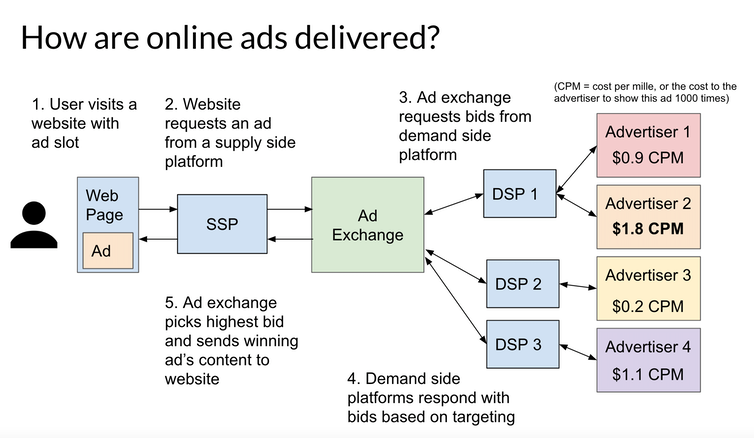Sketchy ads, like those for miracle weight loss pills and suspicious-looking software, sometimes appear on legitimate, well-regarded websites. It turns out that most websites don’t actually decide who gets to show ads to their viewers. Instead, most sites outsource this task to a complex network of advertising tech companies that do the work of figuring out which ads are shown to each particular person.
The online ad ecosystem is largely built around “programmatic advertising,” a system for placing advertisements from millions of advertisers on millions of websites. The system uses computers to automate bidding by advertisers on available ad spaces, often with transactions occurring faster than would be possible manually.
Programmatic advertising is a powerful tool that allows advertisers to target and reach people on a huge range of websites. As a doctoral student in computer science, I study how malicious online advertisers take advantage of this system and use online ads to spread scams or malware to millions of people. This means that online advertising companies have a big responsibility to prevent harmful ads from reaching users, but they sometimes fall short.
Programmatic advertising, explained
The modern online advertising marketplace is meant to solve one problem: match the high volume of advertisements with the large number of ad spaces. The websites want to keep their ad spaces full and at the best prices, and the advertisers want to target their ads to relevant sites and users.
Rather than each website and advertiser pairing up to run ads together, advertisers work with demand-side platforms, tech companies that let advertisers buy ads. Websites work with supply-side platforms, tech companies that pay sites to put ads on their page. These companies handle the details of figuring out which websites and users should be matched with specific ads.
Most of the time, ad tech companies decide which ads to show through a real-time bidding auction. Whenever a person loads a website, and the website has a space for an ad, the website’s supply-side platform will request bids for ads from demand-side platforms through an auction system called an ad exchange. The demand-side platform will decide which ad in their inventory best targets the particular user, based on any information they’ve collected about the user’s interests and web history from tracking users’ browsing, and then submit a bid. The winner of this auction gets to place their ad in front of the user. This all happens in an instant.

When you see an ad on a web page, behind the scenes an ad network has just automatically conducted an auction to decide which advertiser won the right to present their ad to you.
Eric Zeng, CC BY-ND
Big players in this marketplace include Google, which runs a supply-side platform, demand-side platform and an exchange. These three components make up an ad network. A variety of smaller…



